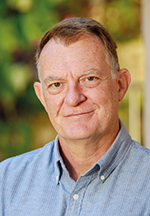

As the year starts to draw to a close, and people are still frantically rushing around trying to accomplish what they had in mind at the start of it, I can look back at 2022 with a mixture of emotions.
Financially, many sectors announced a downturn in fortunes, the majority driven by the factory shutdowns during the COVID-19 pandemic. This caused major stock shortages in semiconductor components in several engineering industries which are still struggling to get back to pre-COVID levels.
Throughout the regions of Europe and Central Asia, the Russian invasion of Ukraine has impeded the post-pandemic economic recovery. Energy price shocks continue to impact not only this region, but many industries worldwide. This global energy crisis has had a knock-on effect in the worldwide supply of goods, and engineering suppliers have not been impervious to its reach.
It was recently reported that according to the World Bank estimates, recovery and reconstruction for this region will total at least $349 billion – this is more than 1,5 times the size of Ukraine’s pre-war economy in 2021. This makes one wonder whether this war is actually worth it. Fighting to be ruler over an area rich in energy, but ending up with a pile of ashes. Ernest Hemingway summed it up beautifully when he wrote “Never think that war, no matter how necessary, nor how justified, is not a crime.”
But I digress!
Some companies fared the storm a lot better, with healthy reported profits for the second and third quarters. Large semiconductor manufacturers like STMicroelectronics and NXP announced healthy year-on-year profits. Let’s hope that the looming energy crisis does not continue to hinder the ability to distribute their products.
This year there were a few recurring topics that continually appeared in my inbox. Artificial intelligence (AI) and machine learning (ML) were big news items, with many microcontroller and microprocessor manufacturers designing and producing chips for use in the AI/ML fields. AI and ML, once the mainstay of large powerful computers, are now being implemented easily into portable semiconductor devices for edge applications. The age of standalone intelligence is almost upon us – quite frankly both an exciting and scary prospect.
Another topic which was prevalent was Matter. As I’m sure most of the readers know by now, the Matter protocol has been designed to connect compatible devices and systems to one another seamlessly.
I can vouch first-hand for the usefulness that a protocol like this promises to be. Just over a year ago I decided to automate my home, but instead of using a system by one manufacturer, I decided to use different components, depending on each one’s functionality. Getting them all to communicate with each other couldn’t be that difficult, could it?
Hahaha. Who was I kidding? At the end of the day, I reflashed the embedded microcontroller in each device with a free-to-use protocol/application called Tasmota and then set them up to use MQTT, a standard messaging protocol for the IoT. I could then run my own MQTT server to handle all the communication requests. Last stage was designing a smartphone interface to be able to send and receive these MQTT messages so that I was able to monitor and control all the devices.
Now that I look back on it, having a standard IoT messaging protocol like Matter (and Thread) could have made all the difference.
Another mind-blowing topic was the miniaturisation of almost everything electronic. ‘SWaP-optimised’ was a buzzword that kept cropping up. Almost across the board, devices and components are becoming smaller and more powerful, but use less power. This is pushing the boundaries of many technologies as the world enters a new era driven by the necessity of using extremely powerful and, at the same time, portable devices.
The future is certainly exciting and I for one cannot wait to see what the new year brings in terms of technological advances in engineering and science.
Here’s hoping that all readers have a wonderful, safe and relaxing festive season, to be able to recharge their biological batteries so that the new year can be tackled with vigour and enthusiasm.
| Tel: | +27 11 543 5800 |
| Email: | [email protected] |
| www: | www.technews.co.za |
| Articles: | More information and articles about Technews Publishing |

© Technews Publishing (Pty) Ltd | All Rights Reserved